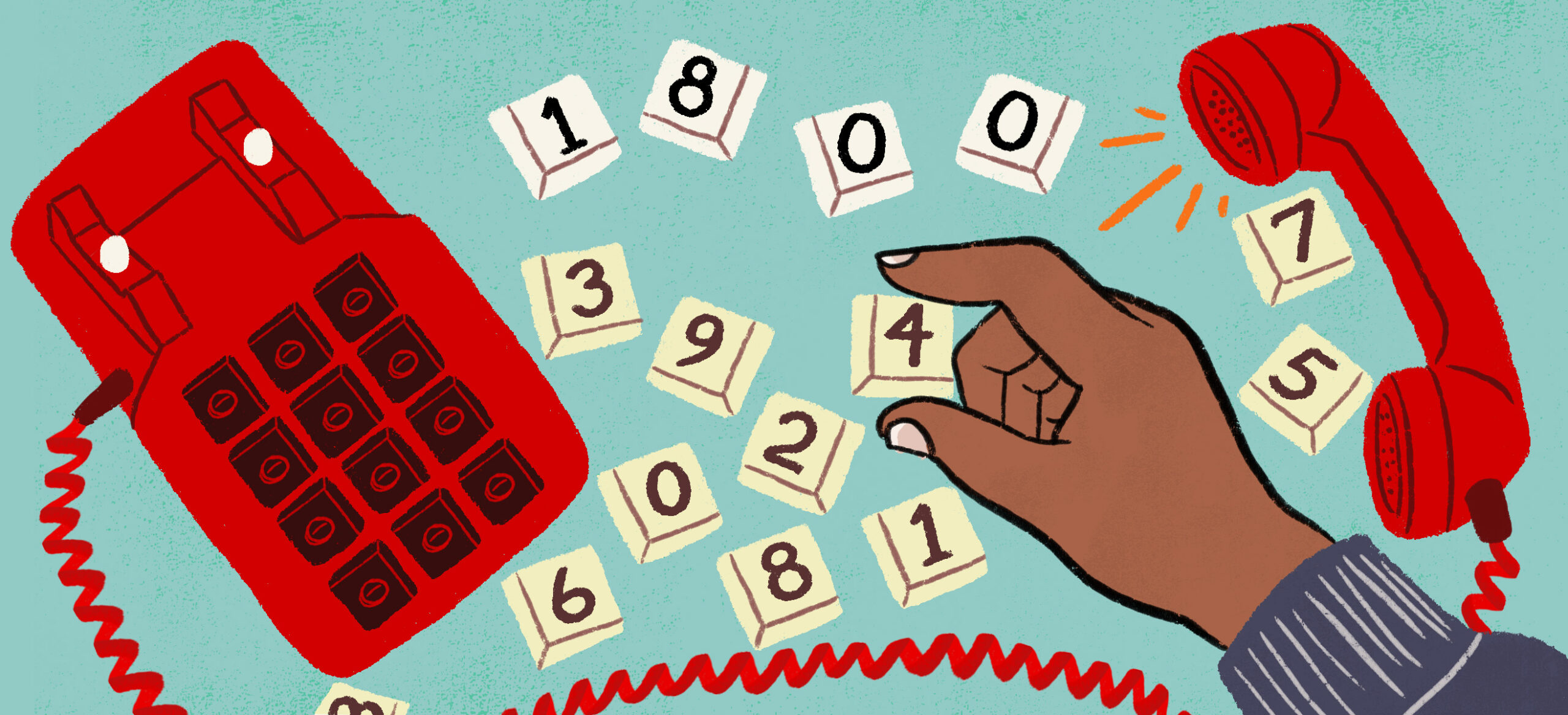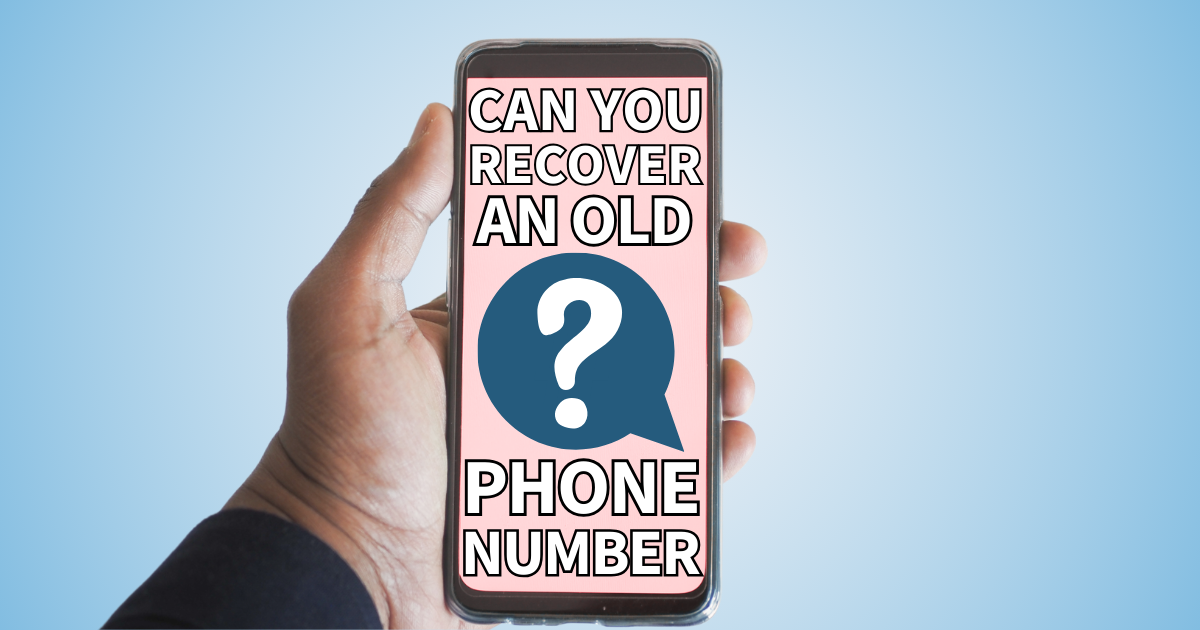Toll-free vanity numbers: they’re on billboards, web banners, commercials — you name it. But how exactly do you get your own toll-free number or toll-free vanity number, like one of those 1-800 numbers you see everywhere? Is there a difference between an 800 number and other vanity numbers? And do they actually make any real difference?
Table of Contents
- What’s a vanity number?
- Benefits of 1-800 numbers
- Why do 1-800 numbers exist?
- How do I get a 1-800 number?
- Do I own my 1-800 number?
- Who pays for a 1-800 call?
- What are VoIPs?
What’s a vanity number?
A “vanity number” is just a phone number that spells out a word using the dial-pad’s classic 3-letter system or a pattern with the digits. They’re intended to be unique, recognizable and easy to remember. Vanity numbers are also known as custom phone numbers, or personalized phone numbers.
Vanity numbers can have local, geographically-specific area codes or prefixes, use most or all digits to spell a word or a phrase (like “Caffe-Latte”), or have a toll-free prefix.
What’s a 1-800 or toll-free number?
Frequently, vanity numbers are associated with toll-free numbers (TFNs), or 1-800 numbers. This is due to a 1-800 number’s special capabilities (more on that later), coupled with the fact that they’re generally easier to market because they’re more memorable.
Simply put, if you’re a business that sells giraffes, what’s easier to remember: a mostly random set of nine numbers given to you by your phone provider, or “1-800-GIRAFFE”?
What are the benefits of a 1-800 number?
It ultimately depends on your personal needs. But in many cases, toll-free numbers have multiple benefits to consider versus a typical local number:
- Actual research has shown that vanity numbers increase trust and engagement. Both empirically and anecdotally, people just tend to take 1-800 numbers more seriously, which is also highly likely to improve your call-connection rates!
- 1-800 numbers are one of the simplest ways to meet customer expectations of contacting an established, professional customer service number, even if the number is operated by an individual or small business.
- While long-distance fees may not apply to most of your customer-base, fees may matter if you take any international calls, which can be common if you deal with distributors.
- Toll-free numbers can be “multihomed,” which means they can be serviced by more than one host or network. This makes them sturdier against outages or, in extreme cases, Distributed Denial-of-Service (DDoS) attacks.
- Caller ID blocking typically doesn’t apply to toll-free numbers, which means the caller always sees the 1-800 number, and you always see them. This is especially helpful for customer verification, call-backs in the case of disconnects, and/or if you collect any sort of analytics on your calls.
While there are multiple ways to use call forwarding to separate business and personal calls on your same mobile device, if you sell anything — a product or a service — anywhere outside the borders of a single location, setting up a 1-800 number should be a heavy consideration for your business. (Especially since it’s so easy to get one!)
Why do 1-800 numbers exist, anyway?
Before cell phones, only around 60 years ago, there was no way to call a far-away phone number without being charged for a long distance call.
In 1967, AT&T was the first company to invent a way to call anyone that avoided fees (but you still had to be in the general area). It took almost another decade before they invented a way for far-away calls to not get charged, while also adding the ability to press a button to forward your call to a different place. (That’s the crucial invention for today’s world!)
Eventually, the TFN, 1-800 method was adopted not only by businesses, but by the government. In the 1990s, the government reserved the following number prefixes to be toll-free exclusively (and most people refer to all of these as “800 numbers”):
- 888
- 877
- 866
- 855
- 844
- 833
Today, 1-800 numbers are the name of the game for reinforcing consumer trust as well as helping establish legitimacy and credibility as a business. Huge companies like Walmart, Best Buy, or T-Mobile obviously don’t ask you to call their personal or local numbers; they have a professionally set up number that then funnels customers to local stores and appropriate customer service departments.
Not all TFN’s need to be vanity numbers either. Many businesses buy bundles of toll-free numbers to use for various departments or customer support phone numbers. A 1-800 vanity number however, might serve as a company’s primary phone number used for advertising and helping customers reach them faster.
And, yes, even small businesses can do the exact same thing now!
How do I get a 1-800 number?
Ultimately, they’re assigned on a first-come, first-served basis. Here’s a step-by-step guide for getting your toll-free number up and running.
Registering your own 1-800 number
1. The first thing you want to do is pick your number.
After all, the whole point of a vanity number is that you get to choose the number for its marketing potential. This is no small decision!
Given how important your number is, you can first find the number you need at a site like NumberBarn where you can choose from millions of already available custom TFN’s. If you go straight through a traditional carrier, generally you may only get a few choices of pre-assigned numbers, and with less likelihood of getting a truly customized vanity toll-free number.
Even if you end up wanting different features/rates from the place you acquire your number, you can still port your number to a company that offers toll-free number porting!
2. You need to choose a 1-800 number phone plan that’s right for you.
This typically won’t be a big phone provider like AT&T or Verizon, but a third-party company that offers a toll-free number (TFN) with special features, and on a monthly plan.
Examples of third-party companies that offer 1-800 number plans are:
- NumberBarn
- Grasshopper
- Vonage
- Dialpad
- Ring Central
- OpenPhone
Most of these companies are Voice over Internet Protocol (“VoIP”) companies, and the one you choose may depend on which features are most important to you.
While most of these companies offer fairly similar features, it’s still wise to research as many companies as possible. Their platforms can allow you to potentially monitor, record, and forward phone calls and will vary from company-to-company!
3. Finally, you need to set it up!
Once you have your number reserved and ready to go, you may need to get under the hood of your provider’s software to get it running the way you need.
Popular features you might want for your 1-800 phone number can include:
- Auto-Attendant Menus: This menu system instructs callers to press a number to direct them to a different place, like a specific team member, department or message like company hours, etc. It can generally be set up through a carrier’s software and may require you to record voice lines, though some companies offer this as a service.
- Call Forwarding: You’ll need to tell the 1-800 number where to send a caller, which can be as simple as forwarding calls to a personal cell number, or as complex as forwarding to an entire call center department.
- SMS Texting: You can set up a texting system to a 1-800 number, if your provider has that feature.
- Call Views: This is generally the method for recording call information, including caller ID, call status, call recordings, voicemails, and more.
- Third-party software integration: If you’re already “kind of a big deal,” you may be using programs such as HubSpot, Slack, Salesforce, and more, so you’d want to make sure to integrate with your new number.
These are just a few basic examples. The features you will need may get fairly complex, or the whole thing can be as simple as a voice recording that transfers people to your buddy’s cell phone number. The overall benefit of having a 1-800 is still there, regardless!

What if the company I choose doesn’t have the 1-800 number I want?
If the company you want to use doesn’t offer the phone number you want, you might still be able to get it elsewhere. Getting the perfect TFN can sometimes be a little like using eBay! Highly desirable numbers are available, either by using a different one of the available 800 prefixes, or by finding a company that has it for sale. Then you could simply port that perfect number to your carrier, as long they allow for toll-free number porting.
Alternatively, if you want to save money on a fancy 1-800 number and you may only need it temporarily, you could also consider licensing (like leasing or renting) your dream toll-free number for just a few bucks. You pay a monthly fee for the use of the phone number for as long as you need it. Or you could throw down tens of thousands of dollars or more for a wildly desirable phone number, if it’s on the market!
Do I own my 1-800 number?
Yes and no. The FCC doesn’t allow for the “owning” of a toll-free number in a traditional way. But as long as the number originates from a RespOrg, carrier account in your company’s name, or a service provider that lists you as the subscriber, then the number effectively belongs to you. As long as the subscriber (you) pays for phone number service from a provider, it’s yours to keep and use however you deem necessary. Your toll-free number will be yours to use, park, or transfer to someone else.
However, per further FCC stipulations, you can’t resell a toll-free number. Once you no longer need it, you can either discontinue service with your provider, port it to another provider and park it (store it until you need it), or make monthly revenue by licensing it out. You can learn about the benefits of listing your number with NumberBarn here.
Who pays for a 1-800 call?
Whoever owns the 1-800 number will pay for any charges associated with calls to it.
However, setting up your 1-800 number through a reputable system like NumberBarn Business Line, a virtual phone system for solopreneurs and small businesses, affords unlimited minutes toward your 1-800 number, so connection fees generally won’t be an expenditure for you. You can still do some shopping comparison though, as some providers will offer plans with allotted minutes toward your 1-800 number.
What are VoIP numbers again? Do they work with 1-800 numbers?
“VoIP” stands for “Voice over Internet Protocol”. They’re phone numbers that use a broadband internet connection as opposed to a cellular or traditional Public Switched Telephone Network (PSTN) number.
In English, a VoIP is just a number that uses the internet to make a telephone call.
Yes, in most cases, a VoIP can route to a 1-800 number! But a VoIP number is not inherently a 1-800 number itself. And in fact, you cannot organically set up a 1-800 number via many VoIPs, such as Google Voice. But most of the third-party companies that give you a 1-800 number are running on VoIP software.
Other examples of VoIPs include Skype, ZOOM, WhatsApp and Facebook Messenger. They can be fairly easy to set up, and offer some cool online features, often through an app.
Just remember: setting up automated call features via a local VoIP number is not the same as a toll-free number. You still will have many of the same pros and cons of a local number versus a toll-free one.
I still don’t get any of this. Can I talk to someone?
It’s a lot to learn, we get it. We can direct you to NumberBarn Support’s easy to use chat functions for quick questions, or free, in-depth consultations.
A credible carrier or phone service provider can have you up and running with your brand-new 800 number in literal minutes. Start building, or reinforcing, your brand reputation with a toll-free number today.
Illustrations by Daniel Fishel

